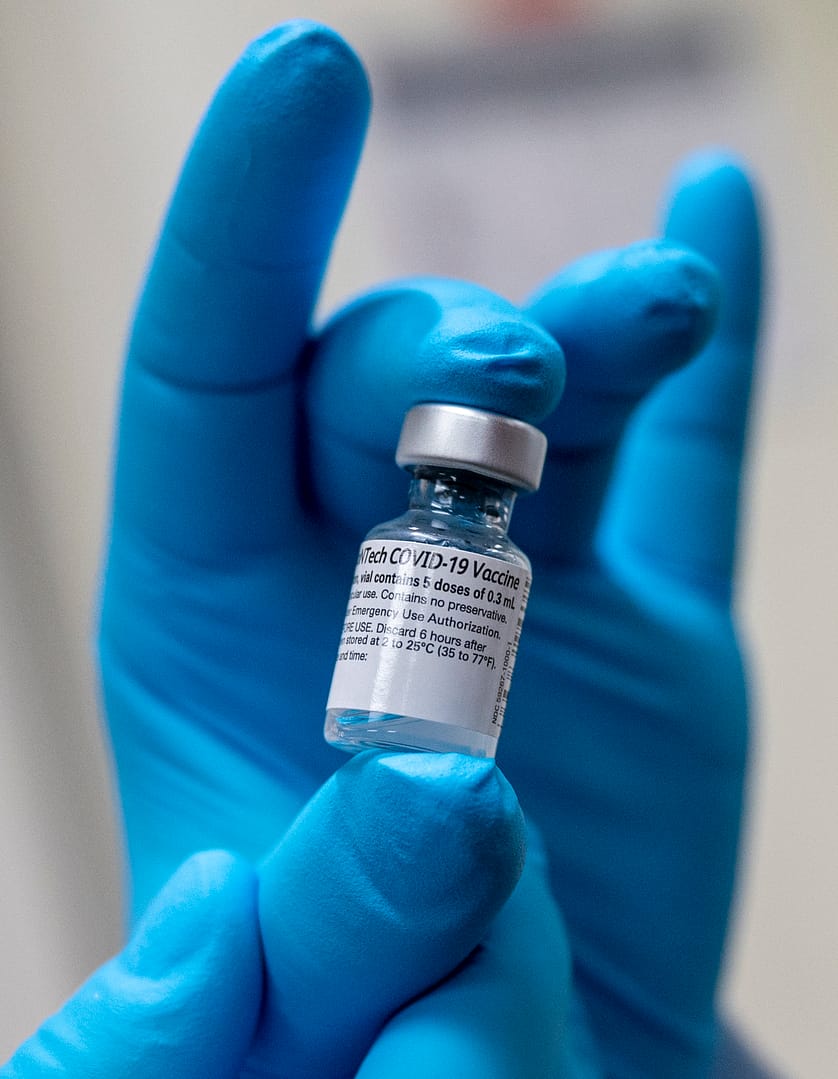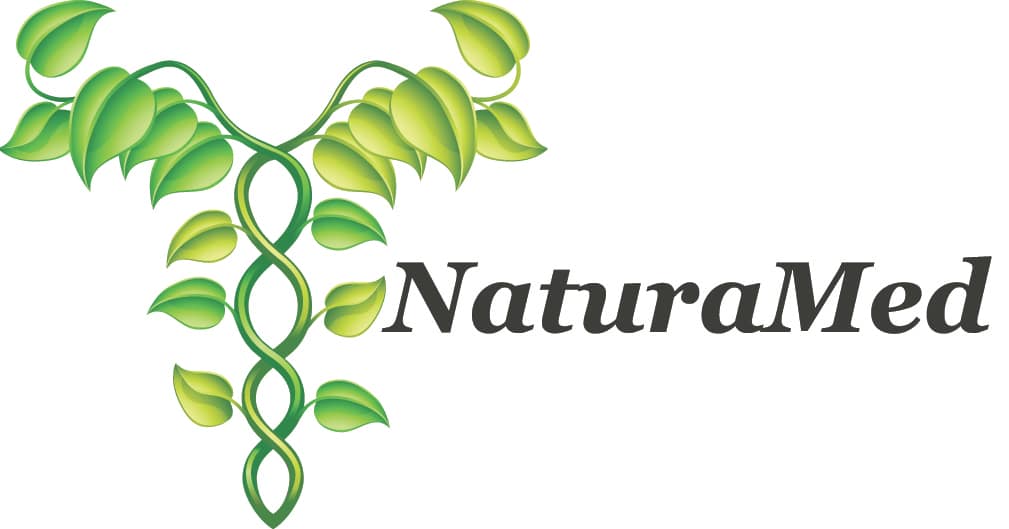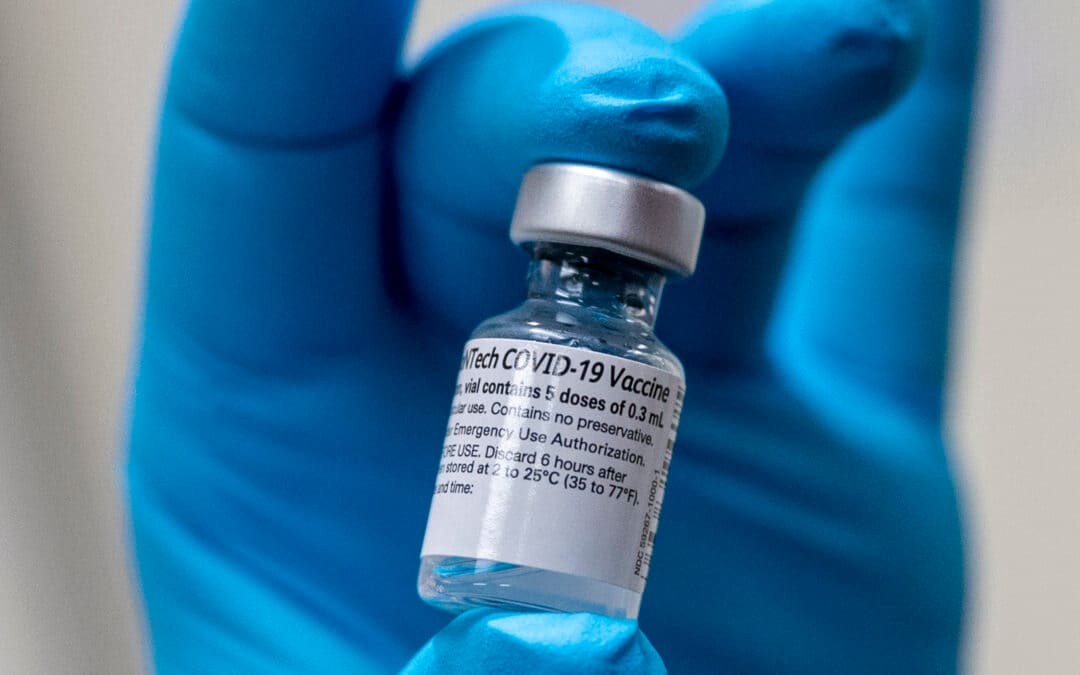Vaccination is a thorny subject. Let’s be clear. A vaccine does not treat, it can only possibly prevent the development of a disease or syndrome. It does this by mimicking the presence of the disease or syndrome in the body so that antibodies will develop. There are several types of vaccines and we will see what their potential dangers and benefits are.
Three categories of vaccines
There are three main categories of vaccines:
1- An inactivated virus vaccine to develop immunity.
2- A genetic manipulation with adenovirus (AstraZeneca-Oxford’s) where a virus is introduced inside. (1)
3- The third type is the vaccine offered by Pfizer and Moderna is pure gene therapy. In this vaccine, there is no virus, but a so-called messenger RNA.
For this third type of vaccine, even though the risk is low in some people (2), this RNA may corrupt the genetic code (DNA) of the vaccinated person. This results in a risk of genetic diseases being passed on to our children.
There is also the danger of anaphylactic shock (severe allergy) for those who already have an allergy requiring an Epipen. Pregnant and breastfeeding women and children under the age of 16 should refrain from using Epipen. People with autoimmune diseases as well as AIDS/HIV cannot receive these vaccines. (3)
Vaccines that love the cold
In both cases, mRNA vaccines require cold stabilization, which is not the case with adenovirus vaccines.
Pfizer vaccine must be stored between -60°C and -80°C because it is unstable. Its accessibility will be reduced in places that have equipment for freezing with liquid nitrogen.
Moderna’s vaccine should be stored at -20°C.
The adenovirus vaccine to be produced by AstraZeneca-Oxford does not require freezing, but rather conventional refrigeration at 2-8°C (4).
Vaccine adjuvants
During the swine flu pandemic in 2009, a vaccine was the talk of the town; GlaxoSmithKline’s PandemRix. According to the British Medical Journal, it was responsible for significant side effects related to narcolepsy.
Narcolepsy or “Gélineau’s disease” is a chronic sleep disorder. Symptoms can include excessive sleep time, feeling extremely tired, or falling asleep involuntarily at an inappropriate time, such as at work, school, or on the street. (5)
Patients with narcolepsy usually suffer from nocturnal sleep disturbances and abnormal sleep time, which is confused with insomnia. It is now classified as an autoimmune disease.
The adjuvant or product added to another to reinforce or complement its action is often a toxic product such as mercury (Thimerosal), aluminum or squalene (in AS03). It is the latter that was in the PandemRix vaccine and which has caused narcolepsy in some vaccinees.
In Sweden alone, nearly 440 out of 702 complaints were compensated by the Pharmaceutical Insurance Fund, which paid out a total of 100 million kronor, or about 10 million euros (about 15 446 000$).
Pfizer’s and Moderna’s vaccines do not require adjuvants.
Vaccines developed too quickly
Swedes are cautious about the COVID-19 vaccine.
A vaccine developed too quickly? No more questions for the Swedes. Hundreds of young people in that country have become narcoleptic from a massive H1N1 campaign that, 11 years later, is undermining their confidence in Covid vaccines.19(6)
There is always a significant risk when a vaccine is developed too quickly, as was the case with PandemRix. (7)
Messenger RNA vaccines
Also, messenger RNA vaccine technology is relatively new and little tested in humans. Here is what Wikipedia has to say about the history of use of messenger RNA vaccines:
“Prior to December 2020, no mRNA drugs or vaccines had been licensed for use in humans, but Moderna and Pfizer/BioNTech were in the process of obtaining emergency use authorization for their COVID-19 mRNA vaccines, which had been funded by the Warp Speed operation (directly for Moderna and indirectly for Pfizer/BioNTech). On December 2, 2020, seven days after its latest eight-week trial, the UK Medicines and Healthcare products Regulatory Agency (MHRA) became the first global drug regulatory authority in history to approve an mRNA vaccine, granting an “emergency license” for Pfizer/BioNTech’s BNT162b2 COVID-19 vaccine for widespread use”. (8)
Large scale experimentation
These mRNA vaccines will therefore be widely deployed around the world before clinical trials on larger populations of subjects in clinical studies have been conducted.
Adenovirus vaccines such as the one being developed by AstraZeneca-Oxford are more proven, stable and clinically tested and remain the only one to be published (The Lancet). (9) Does AstraZeneca-Oxford’s vaccine contain potentially dangerous adjuvants? This information is not known. In any case, there have been a few reported cases of neuromuscular side effects (transverse myelitis), anemia and fever in clinical trials.
Naturally stimulated immunity
There are several ways to naturally stimulate our immunity. I invite you to consult my previous article on this subject. Increasing our immunity with a healthy lifestyle and appropriate supplements does not develop any side effects!
It’s up to you to make your decision!
____
(1) https://www.journaldemontreal.com/2020/11/25/un-vaccin-prometteur-a-adenovirus
(2) with a genetic predisposition and an inadequate lifestyle according to his hereditary fragility
(3) https://ici.radio-canada.ca/nouvelle/1757120/contre-indications-vaccin-pfizer-covid
(4) https://www.journaldemontreal.com/2020/11/25/un-vaccin-prometteur-a-adenovirus
(5) https://fr.wikipedia.org/wiki/Narcolepsie
(8) https://en.wikipedia.org/wiki/RNA_vaccine#History
(9) https://www.thelancet.com/journals/lancet/article/PIIS0140-6736(20)32623-4/fulltext



Recent Comments